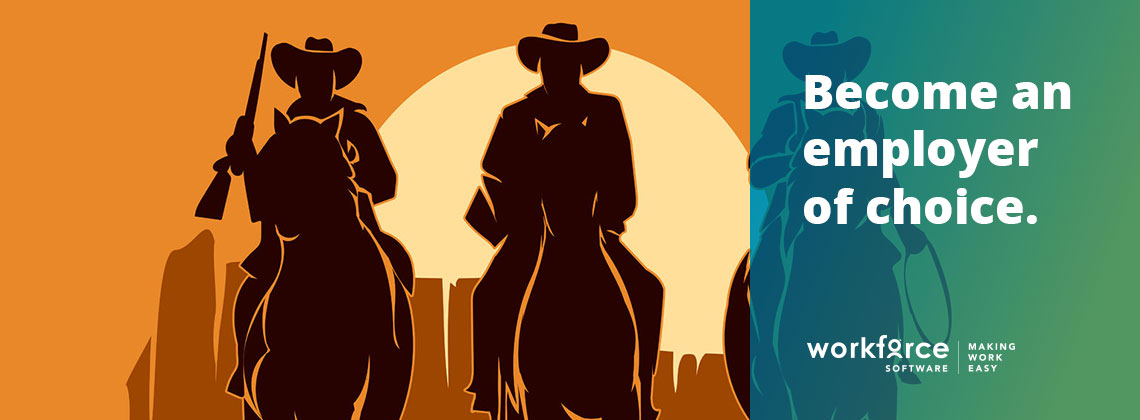How Traditional Employers Can Start Stealing Their Workers Back from the Gig Economy

“Uber for Eddie?” I asked.
“That’s me,” said Paul, my driver. “Airport?”
“Yes, sir.” I got in the back of Paul’s Camry and put my carry-on in the empty seat next me. The car was in pristine condition: it was clean and it smelled good, like pine. There was a mini water bottle in my door’s cup holder and Architectural Digest in the netting of each seatback.
“So, do you Uber full-time?” I asked.
“Absolutely.” he said, looking at me in his rearview. “It beats working for the man.”
“How do you mean?” I asked, although I already knew.
“Uber gave me my life back,” said Paul. “It’s freedom, man. Freedom…”
Why are workers flocking to the Gig Economy?
As you may know, Paul is one of millions of people enjoying the freelance, or “gig”, life all over the world.
Companies like Uber and Lyft, TaskRabbit, Thumbtack, and Handy are making it easy for skilled and unskilled workers alike to work on their own terms, to be their own boss—and the response has been nothing short of profound. Uber, for example, is valued at more than $68 billion, which makes it the fastest growing startup in history.
Uber’s unprecedented success wouldn’t be possible without the legions of drivers that support the service, many of whom left their day jobs to take part in the sharing economy full-time. They left because the sharing economy gives them the freedom to choose their own hours and dictate their income.
“It’s a major step-up from my last job in retail,” said Paul, explaining that he would often be put on-call, waiting several hours for his manager to (possibly) summon him for a coveted weekend shift. The autonomy is also a welcome change for restaurant workers, exhausted after opening. And factory workers, burnt out on dangerous, unfulfilling work.
So, can traditional employers blame their people for exploring other options? Options that have been shown to support a healthy, manageable work-life balance while also paying competitively? Probably not…
But that doesn’t mean employers are powerless to do anything about it…
 Workforce Management for the HR Leader’s Soul
Workforce Management for the HR Leader’s Soul
This book will help you create a healthy, rewarding environment for the people that keep your company moving forward.
How to steal your employees back…
In other words, how can you become the “employer of choice” once again?
Remember, you’re competing with freedom, with choice, with independence. More specifically, you’re competing with transparency and predictability, with convenience and flexibility.
As a traditional employer, it’s a lot to promise and execute on, but that doesn’t make it an unrealistic goal…
Here’s what you do:
1. Foster an employee-centric culture.
Employee centricity boils down to actions. Don’t tell employees how important they are to the business. Show them.
One way is by creating a culture of transparency. Give them access to their schedules, timesheets, and leave balances. They’ll appreciate the transparency because it’ll give them back some predictability (which will come in handy if, let’s say, they’re planning a vacation and need to be precise with their time-off).
Typically, transparency is baked into the apps that power the sharing economy, but that shouldn’t stop you from making it happen at your brick-and-mortar stores (which, in turn, would help your workers make informed personal decisions).
2. Offer scheduling flexibility.
Gig workers love picking and choosing when they’re going to work. It’s incredibly empowering, not to mention engaging. Scheduling flexibility can even inspire people to work harder.
In fact, employees with flexible schedules are often more productive than their non-flex counterparts. They’re also happier. Empowerment has that effect on people. So, go ahead, start by giving your employees a mere modicum of control over their schedules. They’ll be more engaged as a result.
“Employees with flexible schedules are often more productive than their non-flex counterparts.”
3. Make essential tasks convenient to execute.
The gig economy is entirely rooted in convenience—for customers as well as employees.
Uber drivers, for instance, enjoy doing all their administrative tasks in the Uber app, which acts as a single, all-purpose hub. Give your people user friendly, self-service tools and they’ll use them to make their lives easier, better.
The end result: happier people reporting more consistently and accurately for their business—a true win-win.
Subscribe to The WorkForce Blog
Learn the art and science of maintaining productive, happy, engaged employees.
4. Pay them accurately.
Gig employees—whether they’re collecting fares on Lyft or buying groceries on TaskRabbit—have been conditioned to expect accurate pay. And thanks to largely automated labor tracking, you can also deliver millions of payments with surgical accuracy. That means no more end-of-the-month surprises for you and your employees.
“Digital workforce management helps you reduce payroll errors by applying all labor policies in real time.”
“Will you ever go back, Paul?”
“Back to work at a ‘real’ job?”
“Sure,” I said. “Something more traditional, I guess?”
“Never say never, you know,” Paul said, glancing at me in the rearview. “But I’d have to see a change: either Uber has to get a lot worse or my old company has to get a lot better.”
I took that to mean that something has to give to prompt a move. I also took it to mean that companies can’t remain static and stagnant, fixed in their ways. People won’t put up with it because now, more than ever, they have options.
Steal Back Your Talent
Give your employees (and yourself) the gift of
Workforce Management Software.

 Workforce Management for the HR Leader’s Soul
Workforce Management for the HR Leader’s Soul